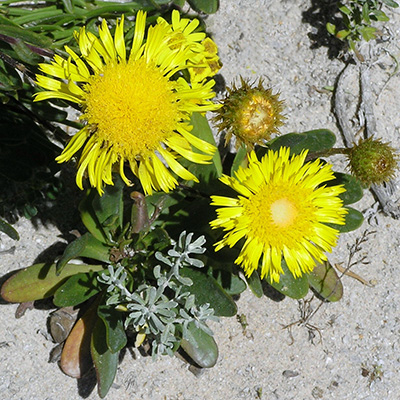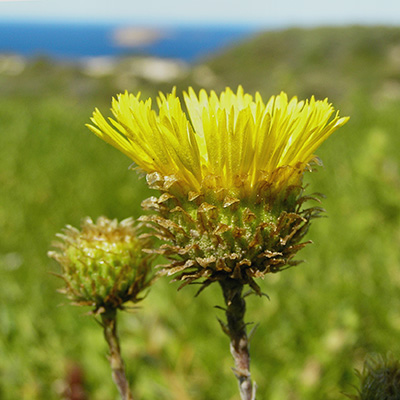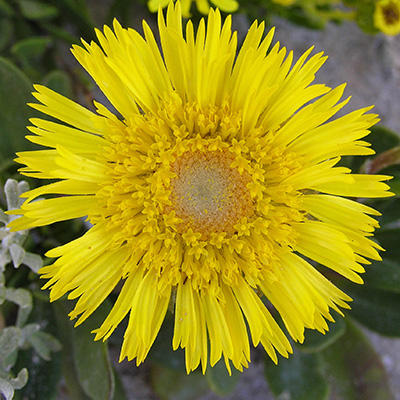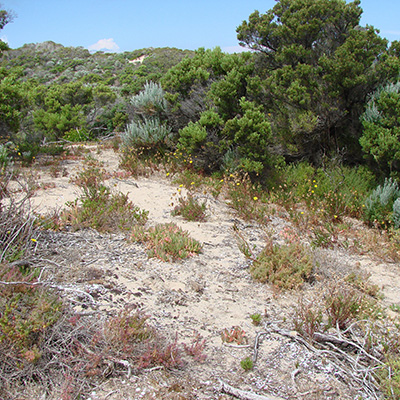The State Herbarium of South Australia has added the 5000th vascular plant to the Census of South Australian Plants, Algae & Fungi. Podolepis rugata subsp. trullata (“pleated daisy”) is a rare native daisy with striking yellow flowers. The subspecies was named this year in an article in the taxonomic journal Muelleria (1mb PDF) by Jeff Jeanes from the National Herbarium of Victoria, who is an expert in this group of plants.
The new daisy has a limited range, and occurs only in Innes National Park, Althorpe Islands Conservation Park and Busby Islet, off the northern shore of Kangaroo Island. The scientific epithet “trullata“, is derived from Latin and means “trowel shaped” and describes the shape of the small leafy bracts around the flower-head.
In a press-release, Chief Botanist Prof. Michelle Waycott said that the discovery is particularly special as 2015 marks the 60 year anniversary of the State Herbarium of South Australia.
“The pleated daisy was found in Innes National Park by amateur naturalists Trudie Jaques and Tony Lewis, who recognised its unique appearance. Thanks to photos and specimens they collected under a scientific permit we were able to formally identify the plant.”
Founded in late 1954 the State Herbarium provides foundational knowledge about what plant species occur in the wild in South Australia, including both weeds and natives.
“Every year around 50 new records are added to the State’s list of species. This is one of the primary roles of the Herbarium, to discover, study, describe and identify plant species so they can be formally recognised and consistently identified. The Herbarium is also responsible for maintaining the collection of all of South Australia’s known species of plants, fungi, mosses, lichens, algae and seaweeds.”
The State Herbarium of South Australia’s collection includes more than one million specimens valued at more than $71 million. Many of these specimens are priceless as their plant species and communities no longer exist.
“The history of the collection is a very important scientific tool, providing snapshots of plants and their locations throughout European settlement. It shows us where and how plant communities have changed over time, including species that are now extinct in the wild. It’s through the recognition of each unique species that we can understand and manage them appropriately, whether it be a rare pleated daisy or an aggressive weedy dandelion.”





